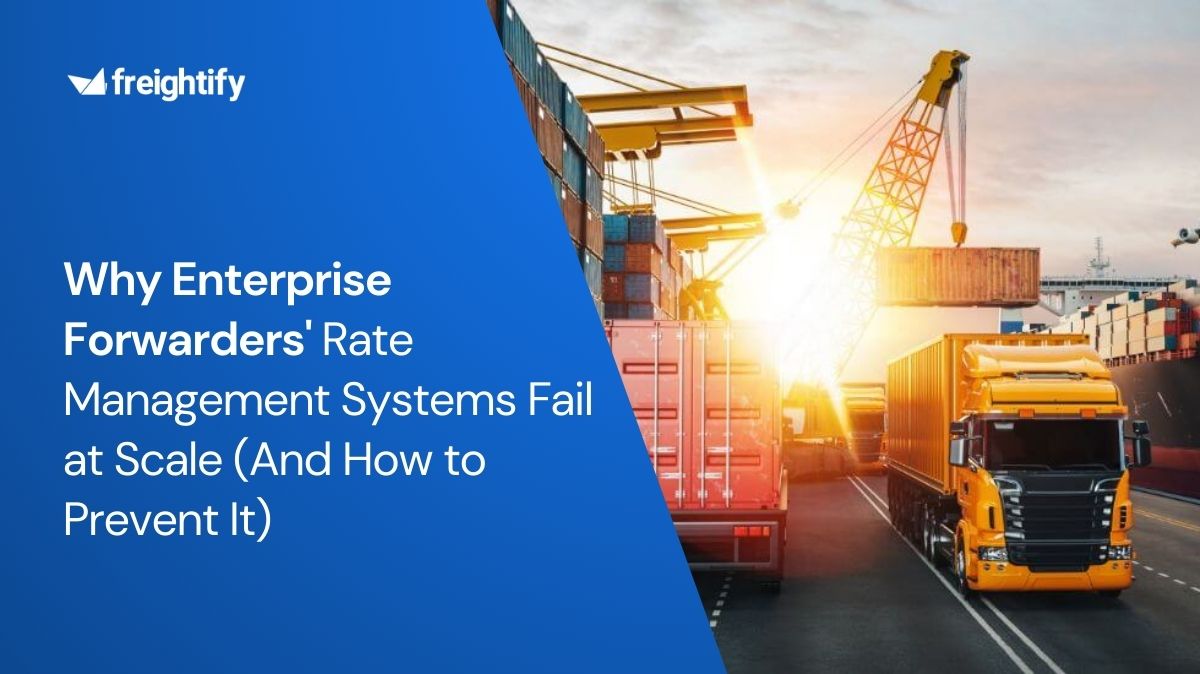The Russia-Ukraine conflict is creating new problems for global supply chain systems worldwide.
The recently healing logistics and supply chains had just emerged from the pandemic-influenced troubles and slowdown. The Russia-Ukraine conflict is now acting as the catalyst in exacerbating existing supply chain problems.
On the one side, commodity exports from Russia have slowed down due to this conflict. On the other, the lack of raw materials and components from Ukraine directly affects factories in Germany and Japan.
With the closing of borders and tightening of restrictions where Russia is concerned, many nations have restricted their airspace to Russian aircraft, causing an immediate increase in the cost of flying cargo from Europe to Asian countries.This results in trade becoming extremely expensive and commercially non-feasible.
In this blog, we will look at the repercussions of this conflict on supply chains across the globe. We will also look at some of the expected after-effects of this conflict on global trade and supply chains.
Let us help you with your journey
Procure, Manage and Quote freight prices (with ancillary charges) in under 2 minutes!
Disruption of the exports of energy, metals, oil, and other commodities
As of February 24, oil prices rose to $100 a barrel , a surge not seen since the 2014 crash.
Oil (especially sunflower oil), natural gas, wheat, and other commodities, which form a large percentage of exports from Russia, might also become costlier as trade routes contract due to sanctions.
Expected rise in shipping prices Products like palladium, steel, and other parts needed by factories to manufacture everything from semiconductors to auto-parts, available in Russia and Ukraine, might also soon be scarce. As a result, factories in Germany, Japan, etc., are shutting down.
Meanwhile, others are cutting off trade relations with Russia to stay on the right side of the sanctions issued by the Biden administration.
Naturally, all this is resulting in a rise of commodities, shipping them, and contributing to the rising inflation.
Expected delay in trades from Europe to Asia and vice versa According to a BRS survey , the Black Sea area was the world’s second-largest grain-exporting region in 2021, with 111.2 million tons of cargo.
But commercial shipping from Ukraine stopped after the bombing by Russian forces, encouraging caution among freighters and shippers to use the Black Sea route. As a risk management tactic, companies are instructing vessels to avoid ports in Ukraine and stay away from any cargo connected to Russia.
Odessa and Chernomorsk, the two key oil ports along the western coast of the Black Sea, have closed entrances to vessels.
Turkish-owned Yasa Jupiter was bombed in the crossfire near the Odessa port, making shippers wary of the risk of falling foul or the conflict-torn region.
Freight forwarders expected to look for alternate trade routes Thanks to port congestion being a major issue, many freight forwarders moved cargo from China to Russia and then Europe via the railways.
More than 300,000 containers moved by rail from China to the EU in the first six months of 2021. But now, freight forwarders have stopped taking these bookings to avoid entering Russia.
Freighters that usually fly over Russia and Ukraine take a longer route via the Middle East to avoid this region.
Freight forwarders based in Europe have also suspended operations in Russia and Ukraine. As a result, forwarders can also anticipate shipping through alternate routes in the near future.
Automobile manufacturing to be affected by the Russia-Ukraine conflict Leoni AG, which makes wire systems in Ukraine for European automakers, shut two factories. As a result, Volkswagen had to shut their operations in Dresden and Zwickau.
With 22 foreign companies similar to Leoni AG, spread across 38 factories, Ukraine manufactures electronic seats, wire harnesses, and more and exports them to automobile manufacturers across Europe. Players like Mercedes have also been affected by this shortage.
Expect risk to food security across Europe and other nations Considered the “breadbasket” of Europe, Ukraine and Russia are responsible for roughly 29% of the global wheat exports. According to BRS , Russia and Ukraine accounted for 30% of global wheat exports, and Ukraine accounted for 16% of global corn exports.
Apart from wheat, Ukraine also produces Barely and Rye that are supplied markets across Europe.
Meanwhile, many nations in the middle east and Africa rely on Ukrainian corn. Ukraine also replaced the USA as China’s top corn supplier in 2021. With Ukraine’s ports closed to the supply chains, and vessels avoiding the region, various nations might go through food scarcity issues in addition to other shortages.
Expected increase in the shortage of sailors and seafarers The global labor crunch in shipping has affected many shipping businesses and cargo networks. One of the ways this manifests is a shortage of seafarers and sailors to crew commercial ships.
According to the International Chamber of Shipping, Russia accounts for 10.5% and Ukraine for 4% of the world’s sailors.
Collectively representing 14.5% of the global workforce of seafarers , the Russia-Ukraine war can lead to a severe issue for shippers and other stakeholders.
Most of these sailors might be conscripted into the armed forces by the two warring nations or find it difficult to travel to other countries to ply their trade, exacerbating the lack of seafarers for commercial vessels.
Expect container rates to remain high and even increase With a workforce shortage, one can expect the shortage of containers also to increase. According to Drewry’s composite World Container Index , container prices increased by 1.1% to $9,477.46 per 40ft container as of February 24.
With congested ports and terminals, container markets were expected to face a crunch. The Russia-Ukraine conflict might only increase its time to reach a solution. With ports and terminals in and around the two nations becoming off limits, chances of cargo being stranded and unavailable also increases.
The Russia-Ukraine crisis is leading manufacturers and industries across the globe to find an alternative to their supply chain issues.
While shipping companies are re-routing their cargo and analyzing options to avoid the ill effects of this war, we can expect an overall rise in freight prices.
Businesses can use digital tools and technology to anticipate problems in the supply chain and solve expected crises despite a black-swan event like war. But what, the repercussions will of further sanctions and the ban on certain Russian banks will only be visible in the long term.







.png)








.png)



